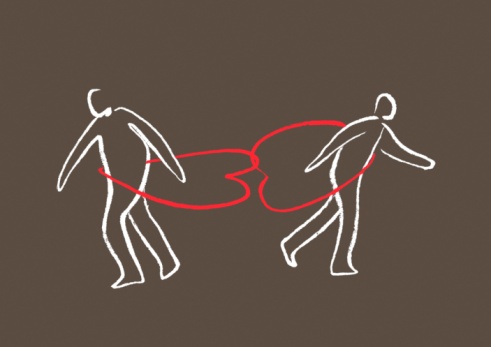Date: Thursday, September 26, 2024
Title: Collaborative Practice Values and Ethics: Learning from the Mayo Clinic model in using core values to help focus on the needs of clients and their families
Presenter: Judith H. Johnson
Collaborative Practice Attorney – “Resolving Disputes Respectfully”
www.collaborativedivorceminnesota.com
Description of Training
What are the unique practice values and professional ethics that Collaborative Professionals bring to their work with clients and families? How are they similar (or different) from the practice values of the Mayo Clinic model? Collaborative Professionals bring so much heart into their work – how can we be more intentional about using that focus to bring greater value to our work, for the sake of our clients and their families? Part of “going viral” with our service is making sure that client experience is consistently something empowering for them personally, that they feel compelled to share with others – how can consistency in delivering that “viral” service also help to grow our message to couples who need us?
Location: 3300 Edinborough Way, Edina, MN 55435, 1st Floor Training Room
Time:
12:00 PM Lunch (Optional)
12:50 PM Announcements and introductions
1:00 PM Presentation Begins
2:30 PM Break
2:45 PM Presentation
4:15 PM Presentation Ends
Cost:
CLI Members and non-members:
Lunch & Presentation: $60
Presentation only: $50
CLI Student Members, CLI Emeritus Members:
Lunch & Presentation: $10
Presentation only: $0
CLI Annual Partners: $0
Continuing Education:
3.0 credit PENDING MN CLE (2 Standard, 1 Ethics)
3.0 credit PENDING MN BOD of Psychology
3.0 credit PENDING LMFT
Certificate of attendance for self-filing for LICSW & ADR.
Instructional Materials for Attendees:
We are also asking, as part of our collaboration with Mayo Clinic Patient Experience this year, that attendees purchase in advance of this training, the little book “Mayo Clinic Values: A Field Guide for Your Journey”, from Mayo Clinic Press
https://mcpress.mayoclinic.org/product/the-little-book-of-mayo-clinic-values/
Cancellation:
Refunds for registration will be processed if notice of cancellation is received by 9/20/24.
Who Should Attend: CLI Members, Family Law Professionals
Educational Level: Overview
Questions?
Registration: Sandy Beeson 952.405.2010 | cli@collaborativelaw.org
Training Chairs:
Louise Livesay-Al | louise@livesaylawoffice.com
Rebecca Randen | rebecca@randenlaw.com






 While researching for this post, I came across a number of divorce-related blogs. The blog medium provides an efficient and concise opportunity to share information and educate the public. This blog focuses on the
While researching for this post, I came across a number of divorce-related blogs. The blog medium provides an efficient and concise opportunity to share information and educate the public. This blog focuses on the 
 Collaborative Divorce was started in Minnesota 25 years ago and has spread to more than 20 countries because it meets two basic needs felt by divorcing couples around the world. What does it mean to say that a divorce is Collaborative?
First, it is important to understand that difference between the formal Collaborative divorce process (with a capital C) and the use of the word collaborative. To be collaborative simply means to work together and, in that sense, any divorce in which people work together could be described as collaborative, (small c). However, the Collaborative divorce process is something distinctly different.
Most people want to keep their divorce amicable, and Collaborative Divorce gives them the tools to work out of court to make that happen. At the same, people facing divorce want to know that they are protected; that they have someone looking out for their interests. Collaborative Divorce provides each party with an attorney who will work with them to help them achieve their most meaningful goals.
In a Collaborative Divorce, the attorneys must withdraw if the matter goes to court in an adversarial proceedings. That is the one rule. A rule that is simple and yet, changes the entire tenor of the divorce negotiation. It is a great example of addition by subtracting. By subtracting one element, (the ability of the lawyers to fight), a door is opened to add many more valuable tools (true interest based-bargaining, teaming with financial experts and mental health professionals, deeper solutions, etc.). That one change redefines the negotiation and creates a ripple effect that, if handled in a skillful manner, creates many more options.
People sometimes hire aggressive lawyers, reluctantly; believing that their spouse will be aggressive and that they, therefore, need to “fight fire with fire”. The problem, of course, is that fighting fire with fire means there is a great risk that someone (maybe everyone) will get burned.
Collaborative Divorce, with the agreement not to fight, is intended to put out the fire, so that you, and your spouse, can build their future on solid ground. That is not easy to achieve. It requires skill and commitment. An attorney who cannot use argument and fighting must have other skills. Equally important, clients who intend to achieve their highest goals without fighting must be prepared to work on developing other skills as well.
To learn more about the Collaborative Process and to find experts with skill and experience in this area, go to
Collaborative Divorce was started in Minnesota 25 years ago and has spread to more than 20 countries because it meets two basic needs felt by divorcing couples around the world. What does it mean to say that a divorce is Collaborative?
First, it is important to understand that difference between the formal Collaborative divorce process (with a capital C) and the use of the word collaborative. To be collaborative simply means to work together and, in that sense, any divorce in which people work together could be described as collaborative, (small c). However, the Collaborative divorce process is something distinctly different.
Most people want to keep their divorce amicable, and Collaborative Divorce gives them the tools to work out of court to make that happen. At the same, people facing divorce want to know that they are protected; that they have someone looking out for their interests. Collaborative Divorce provides each party with an attorney who will work with them to help them achieve their most meaningful goals.
In a Collaborative Divorce, the attorneys must withdraw if the matter goes to court in an adversarial proceedings. That is the one rule. A rule that is simple and yet, changes the entire tenor of the divorce negotiation. It is a great example of addition by subtracting. By subtracting one element, (the ability of the lawyers to fight), a door is opened to add many more valuable tools (true interest based-bargaining, teaming with financial experts and mental health professionals, deeper solutions, etc.). That one change redefines the negotiation and creates a ripple effect that, if handled in a skillful manner, creates many more options.
People sometimes hire aggressive lawyers, reluctantly; believing that their spouse will be aggressive and that they, therefore, need to “fight fire with fire”. The problem, of course, is that fighting fire with fire means there is a great risk that someone (maybe everyone) will get burned.
Collaborative Divorce, with the agreement not to fight, is intended to put out the fire, so that you, and your spouse, can build their future on solid ground. That is not easy to achieve. It requires skill and commitment. An attorney who cannot use argument and fighting must have other skills. Equally important, clients who intend to achieve their highest goals without fighting must be prepared to work on developing other skills as well.
To learn more about the Collaborative Process and to find experts with skill and experience in this area, go to 
